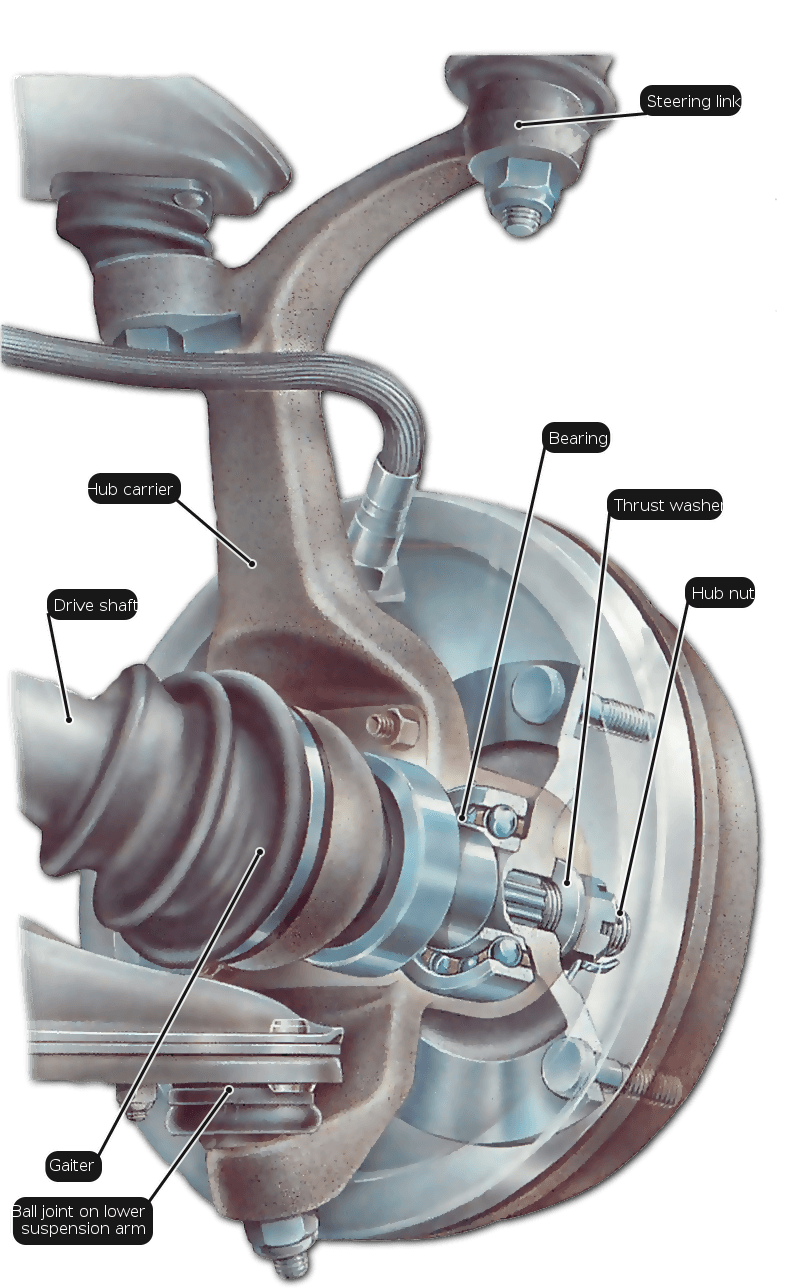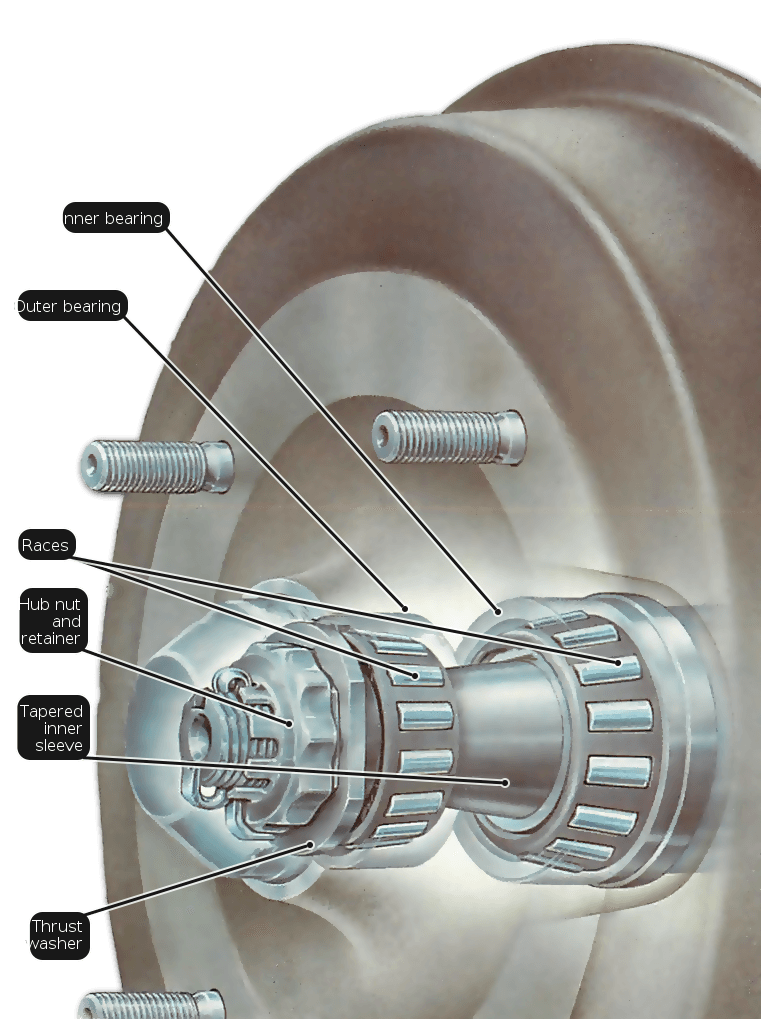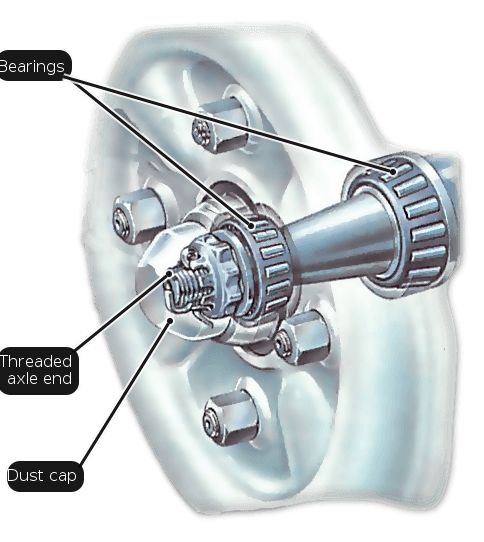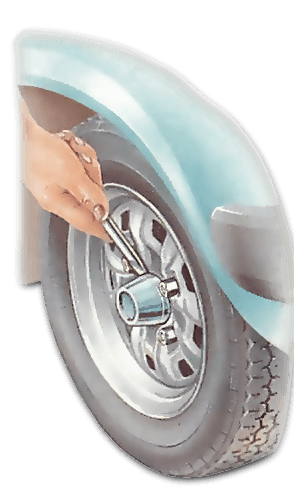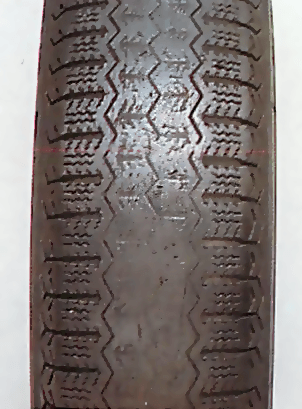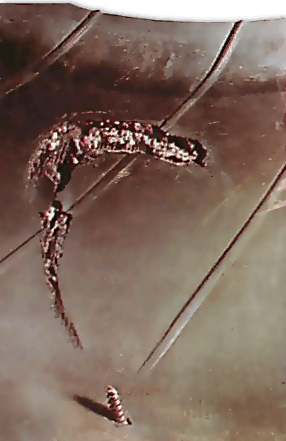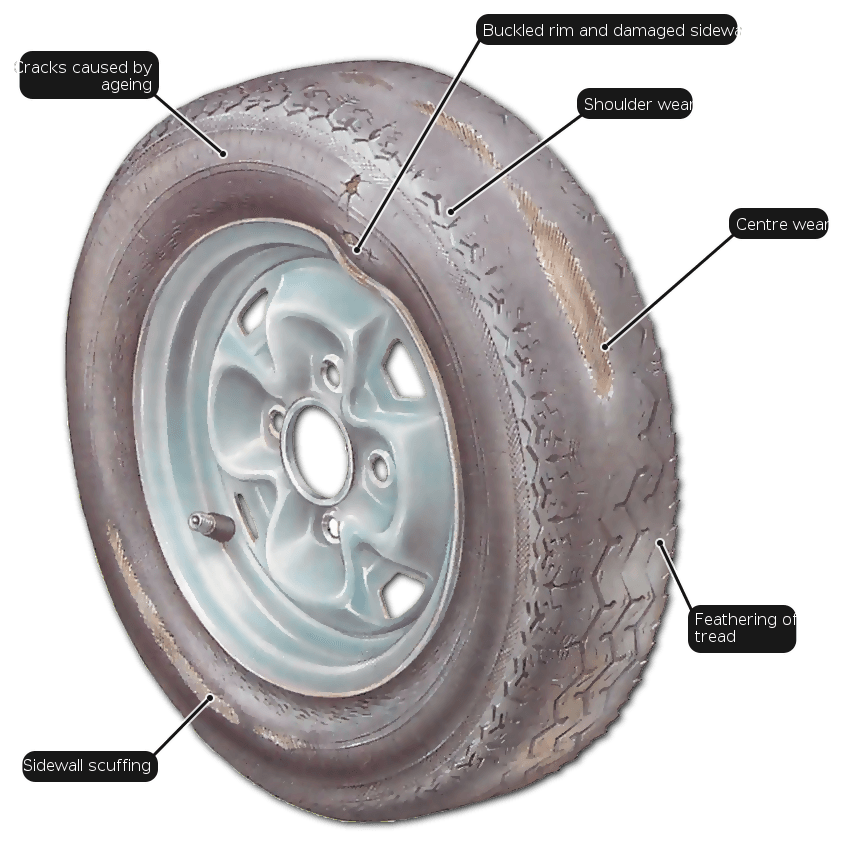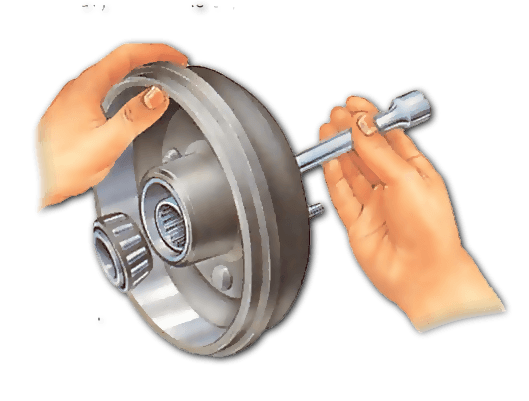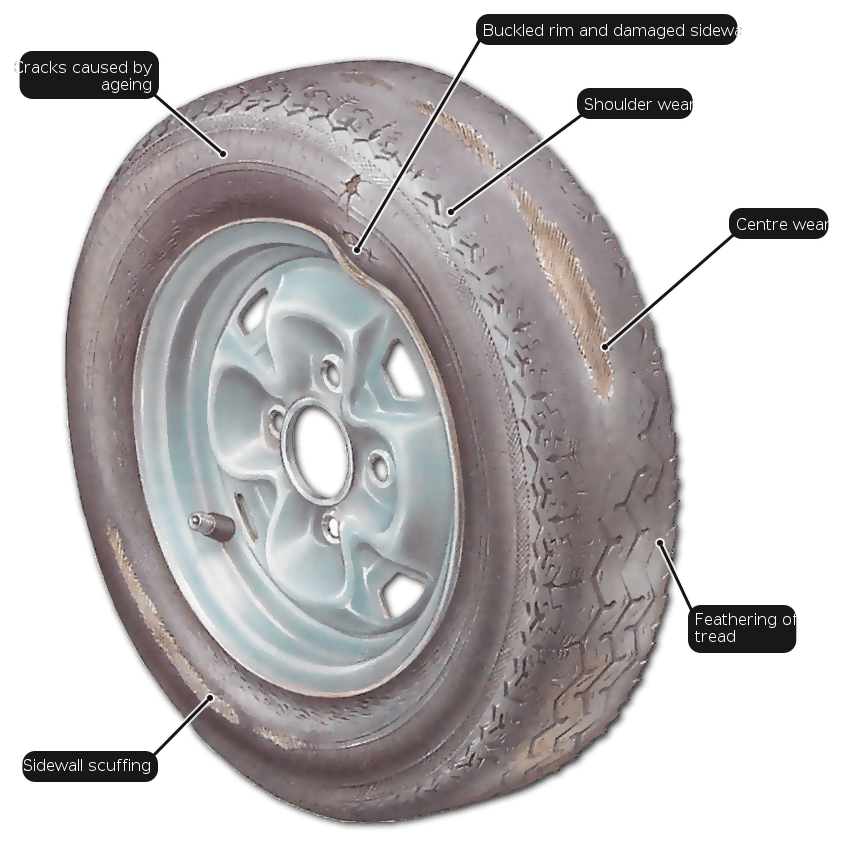Replacing wheel bearings on driven wheels
A front-wheel-drive system with the inner and outer wheel bearings inside a hollow hub carrier. They are separated by a short tubular spacer. The drive shaft runs through them into a splined drive flange, to which the wheels are bolted. Cars with front-wheel drive have front-wheel bearings that resemble closely those in the rear wheels of rear-wheel-drive cars which have independent suspension (See How car suspension works). The type of bearing used also has much in common with non-driven wheel bearings (See Checking the half shafts). However the bearings of…
Read More